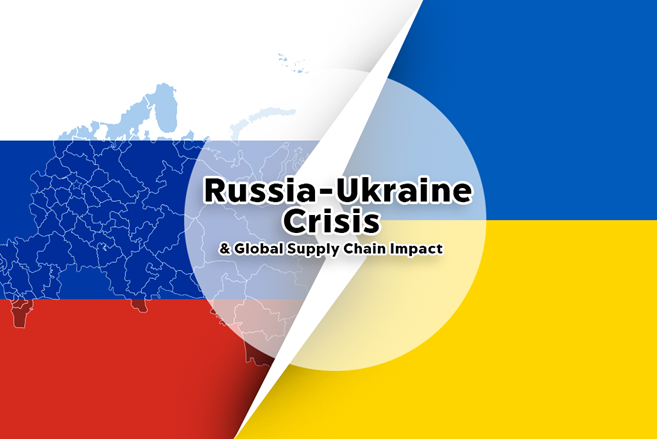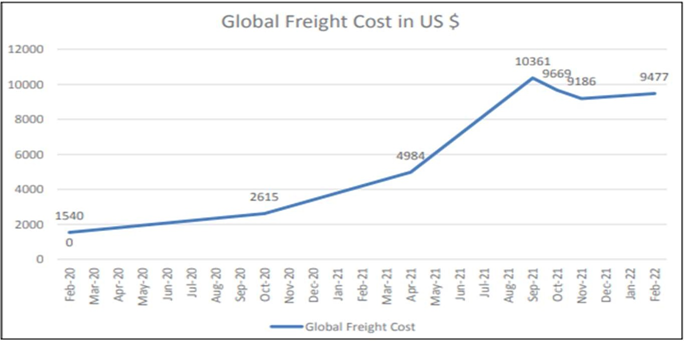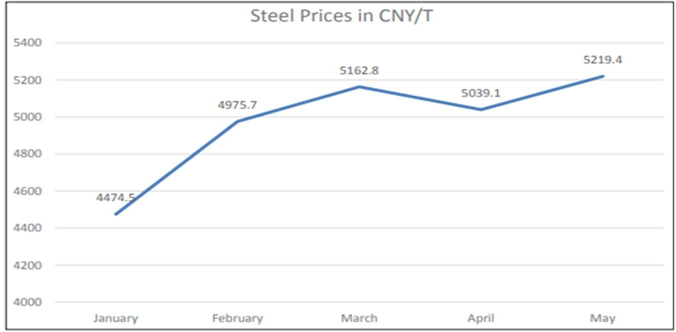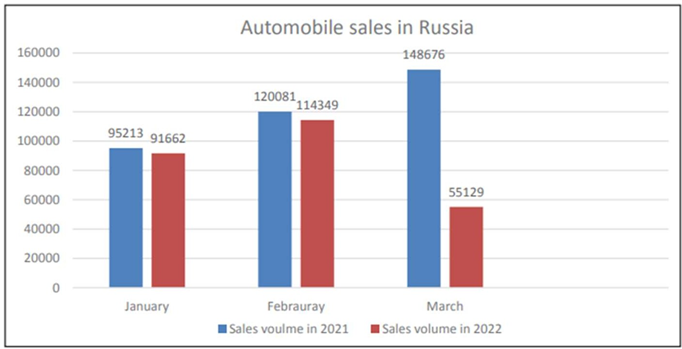
The conflict between Ukraine and Russia has sparked a global crisis. Russian Federation launched its special military operation in Ukraine on 24th February 2022 ending months of uncertainty over its troop build-up at the border. The subsequent sanctions on Russian exports, banks and individuals by the United States, European Union, and G7 have added to the woes of already stressed global supply chain network. This has led to higher oil prices, food shortages, and disruptions in supply chains. The tension between these nations dates back to 2014, but it’s escalated significantly now, prompting harsh sanctions from the US, EU, Australia, and others. These sanctions target Russia’s financial, real estate, import/export, and technological sectors. While some countries in Europe haven’t completely stopped trading oil and energy with Russia, they’re gradually reducing reliance. The US, once a major oil trade partner, has completely banned energy-related trade through an order by President Biden on March 8th.
Despite their support for Ukraine, most European countries heavily depend on Russian oil for various purposes, including fueling vehicles and powering manufacturing. Russia stands as the EU’s main crude oil supplier, accounting for about a quarter of their petroleum imports in recent years. With these major importers banning Russian oil, other suppliers are struggling to meet global energy needs. The International Energy Agency responded by releasing emergency oil reserves, but the demand surge led to further releases and skyrocketing prices, hitting around USD 130 per barrel in March 2022. Although prices later dropped to around USD 95, the impact on electricity generation and overall global markets remain significant. The conflict between Russia and Ukraine has affected global food supplies like wheat, corn, and edible oils, as both countries are major exporters. Together, they provide around a quarter of the world’s wheat exports and fulfill about 70% of grain needs for nations like Turkey and Egypt. Ukraine is a significant supplier of corn to China and dominates global sunflower oil exports, accounting for about half of the total.
The scarcity and high prices of basic goods are expected to drive up labor costs in affected countries as people struggle to manage the increasing cost of living. In the UK, wages have already risen by around 4% this year and are likely to continue increasing due to the war’s impact. The conflict has also led to a drop in remittances in Central Asian countries with many residents working in Russia, such as the Kyrgyz Republic, where remittances are predicted to decrease from 83% in 2021 to about 33% this year. These effects will push more people into the domestic labor market as they seek additional income to cope with rising prices. These combined impacts on labor and commodity prices will have significant effects on various sectors and drive unsustainable prices for goods, including technology crucial for sustainability transitions.
Disruption in Oil and Gas: – The Russia-Ukraine conflict and the resulting sanctions on Russian oil disrupted the oil and gas sector’s supply chain, causing crude oil prices to surge from $91 to $130 per barrel. Sanctions on shipping for Russian oil led to a threefold increase in shipping rates and impacted transportation, a key element of the supply chain. This, coupled with heightened global freight charges and increased ship fuel prices, has significantly affected supply chain profitability. High oil prices are causing inflation in oil-importing nations like India and escalating commodity costs in developing countries. Industries reliant on crude oil, such as rubber, plastics, and petroleum products, are experiencing soaring manufacturing and transportation expenses. Uncertain oil prices are hampering timely deliveries, undermining the supply chain’s goal of efficient and affordable product distribution.

Figure 1. Increase in Freight costs in US.
Source: – Sathe, M., 2022. Global Supply Chain Imputations of Russia-Ukraine War. Journal of Supply Chain Management Systems, 11.
Disruptions in Agriculture Sector: The conflict in Ukraine disrupted local supply chains, causing widespread food shortages in Europe and Africa. Egypt, Tunisia, Lebanon, and Western European countries faced surges in food prices alongside rising energy costs, supply chain disruptions, and decreased profitability. As Ukraine is a major grain producer, sanctions on Russia and Ukraine halted wheat exports, leading to price jumps of 12% for wheat and 14.5% for corn. Sunflower oil prices soared due to disrupted supply chains in Ukraine, while fertilizer prices reached record highs globally. These increased agricultural input costs will impact supply chains worldwide and raise costs in various regions. Shutting down food and agriculture-dependent manufacturing units has strained supply chains with limited food product availability. However, India’s agriculture supply chains benefited as countries like Egypt, Indonesia, and Qatar increased wheat and grain procurement from India due to its efficient supply chain, making Indian wheat exports cost-effective.
Disruptions in Chemicals and Metal Sector:- The conflict in Ukraine disrupted crucial supply chains in the chemicals and metal sectors. Ukraine’s significant role in neon gas production for the semiconductor industry was affected, causing disruptions in the manufacturing cycle and adding stress to already strained semiconductor supply chains due to COVID-19. Meanwhile, sanctions on Russia boosted chemical exports from India, benefiting Indian supply chains. The war in Ukraine also impacted steel production, with blocked Ukrainian ports halting metal exports and leading to a sharp rise in global steel prices. Sanctions affected raw material supplies like coal and iron in Russia, impacting steel production further. Major metals such as nickel, palladium, aluminum, pig iron, and copper saw price surges due to supply concerns. These disruptions directly impacted supply chains for automobiles and heavy machinery.

Figure.2. Rise in Steel Prices
Source: – Sathe, M., 2022. Global Supply Chain Imputations of Russia-Ukraine War. Journal of Supply Chain Management Systems, 11.
Disruptions in Automobile sector:- The automobile sector experienced assembly unit closures in Germany by BMW and Volkswagen due to shortages of raw materials sourced from Ukraine. Around 1 million car demands were lost in Ukraine and Russia for European and American manufacturers. Car sales in Russia dropped by 63% due to sanctions and supply chain closures. India felt the impact with an 8% decline in passenger vehicle sales in February, coupled with a 15% rise in steel and aluminum costs. A global chip shortage is driving up vehicle prices in several countries, leading major automakers like Renault, Hyundai, Kia, and Toyota to either shut down or reduce sales in Russia as part of a broader corporate retreat from the country.

Figure 3. Automobile sales in Russia
Source: – Sathe, M., 2022. Global Supply Chain Imputations of Russia-Ukraine War. Journal of Supply Chain Management Systems, 11.
Disruptions in Pharmaceutical sector: – The pharmaceutical sector faced disruptions as sanctions halted the supply of pharmaceutical equipment and products to Russia, impacting supply chains in Ukraine, Russia, and Eastern Europe. Increased transportation costs, port blockades, and disrupted logistics affected major Indian pharmaceutical companies’ exports to Russia and Ukraine. Sales to Russia from April to December 2021 by the Indian pharma industry totaled $386 million. India, a major exporter of pharmaceuticals, relies on raw material imports from Russia, making the supply chain disruption costly for Indian pharmaceuticals. This disruption in the Indian pharmaceutical supply chain affects the global supply of medicines, given India’s status as the largest exporter of pharmaceutical products worldwide.
Conclusion
Together, the economies of Russia and Ukraine total $1.93 trillion, ranking them as the eighth largest in the world. The two countries export a lot of food, energy, metals, and pharmaceuticals. These exports are essential to global commerce. However, the conflict has seriously disrupted supply networks not just in Eastern Europe but also throughout all of the countries’ internal supply chains. The war is putting stress on every sector of the economy and its associated supply chains. Global supply chains are stagnating, costing billions of dollars in losses every day. Years will pass before the global supply chains, particularly those in Eastern Europe, get back on track.
References:
- Sathe, M., 2022. Global Supply Chain Imputations of Russia-Ukraine War. Journal of Supply Chain Management Systems, 11.
- Arekzi, R. (2022). War in Ukraine, impact in Africa: The effect of soaring energy and food prices. Video Vox.
- Jack, C. (1997). Achieving maximum supply chain efficiency. IIE Solutions, 29(6).
- Macdonald, J. R., & Corsi, T. M. (2013). Supply chain disruption management: Severe events, recovery and performance. Journal of Business Logistics
- Revilla, E., & Sanez, M. J. (2013). Supply chain disruption management: Global convergence and national security. Journal of Business Research, 67, 1123-1135
- Craighead, C. W., Blackhurst, J., Rungtunsanatham, M. J., & Handfield, R. B. (2007). The severity of supply chain disruption: Design characteristics & mitigation capabilities. Decision Sciences, 38, 138-156.
- Russia-Ukraine Crisis: Exporters Fear Fresh Spike in Shipping Costs. (2022). Retrieved from https://www. financialexpress.com/economy/russia-ukraine-crisisexporters-fear- fresh-spike-in-shipping-costs/2444119/.
